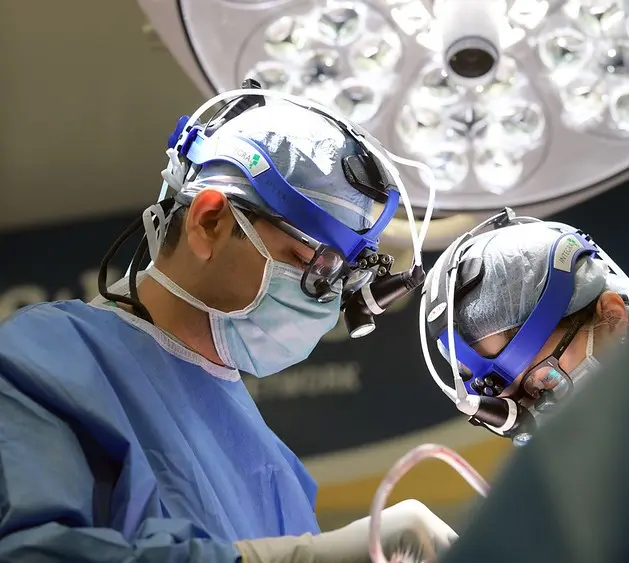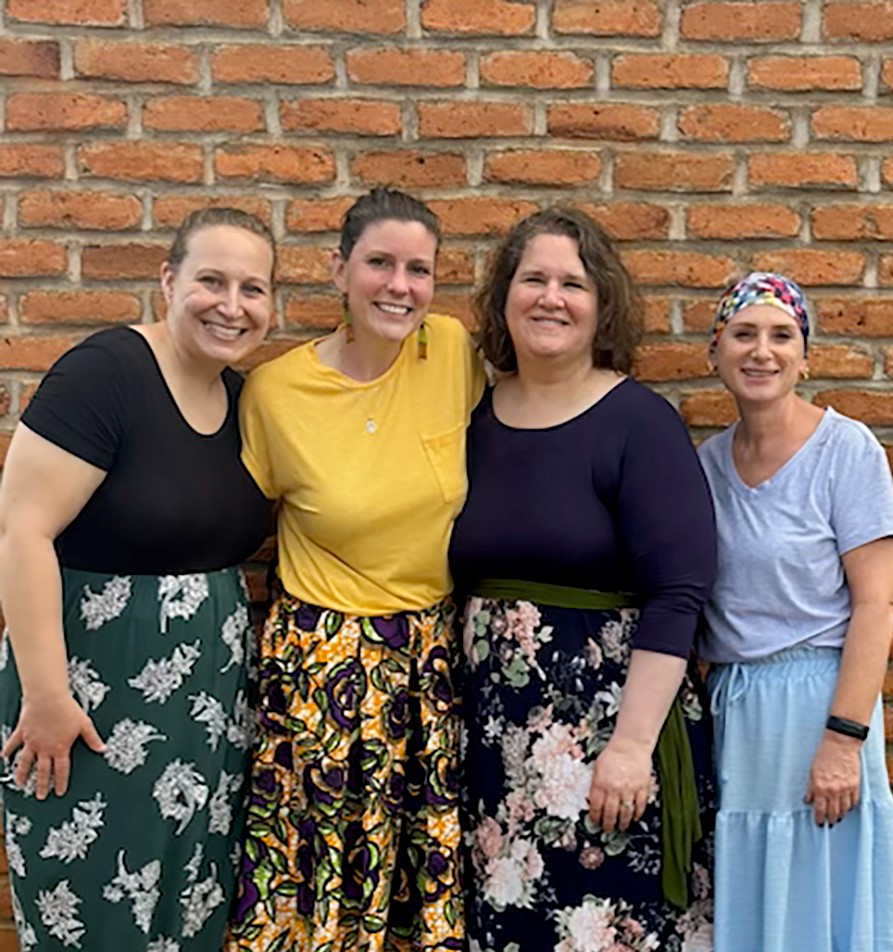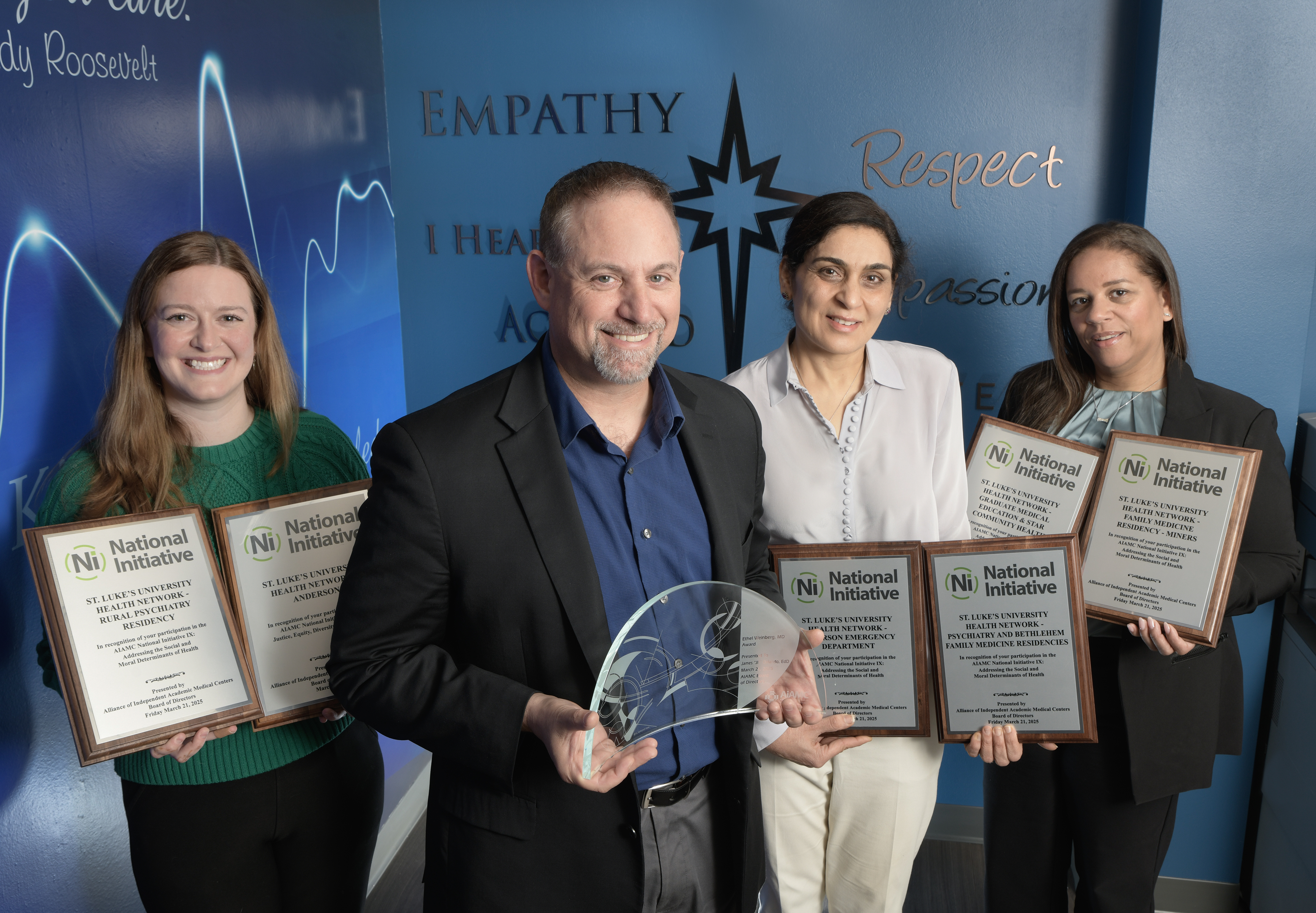Promising Research to Stabilize Growth of Abdominal Aortic Aneurysms
January 16, 2025

St. Luke's vascular surgeons were the first in the Northeast to enroll a patient in a research study that could revolutionize the care of patients with small to medium-sized abdominal aortic aneurysms (AAA).
The aorta is the largest blood vessel in the body, which comes out of the heart and travels down inside the body cavity. AAAs develop when the tissue that lines the aorta weakens and the aorta starts bulging out, forming the aneurysm, which often continues to enlarge and could eventually rupture. The most common area where this occurs is below the kidney arteries in the abdomen. The current standard of care for aneurysms less than 5-5.5 cm (about 2 inches in diameter) remains watchful waiting with periodic ultrasounds or CT scans. Once it becomes larger than 5.0 cm (women) and 5.5 cm (men), it may be considered for repair with either stent graft or open surgery.
Every year, over 200,000 people in the U.S. are diagnosed with an abdominal aortic aneurysm. A ruptured AAA is the 15th leading cause of death in the country, and the 10th leading cause of death in men older than 55. Famous people who have died from a AAA rupture include Albert Einstein, Lucille Ball and George C. Scott.
“The degradation of the tissue lining the aorta, made up of elastin and collagen (connective tissue proteins), results mostly from smoking, high blood pressure, genetic conditions and family history,” explained Sharvil Sheth, MD, St. Luke’s chief of vascular surgery.
Dr. Sheth is St. Luke’s principal investigator for this study, called stAAAble, sponsored by Nectero Medical, Inc. and launched at St. Luke’s University Health Network in late spring. The study aims to evaluate the potential benefits of the investigational therapy in stabilizing AAA size and minimizing AAA-related events as compared to the conventional “watchful waiting” approach. Dr. Sheth’s colleagues, Lynne Doctor, MD, and Maggie Lin, MD, are also enrolling and treating participants in the study.
St. Luke’s is seeking male patients with AAA measuring 3.5-5 cm and female patients with AAA measuring 3.5-4.5 cm, to assess for possible inclusion in the stAAAble study. If accepted, they will be randomized to either minimally invasive same-day treatment with the new drug, called PGG (pentagalloyl glucose), or entered into the surveillance-only branch of the study. Patients who have been diagnosed with AAA, or suspect they have one, may contact St. Luke’s Vascular Center at 484-503-8281.
Patients randomized to the study’s treatment arm will have PGG delivered through a balloon catheter inserted through the femoral artery in the patient’s groin.
“The PGG mixture may help slow the breakdown of the elastin and collagen in the lining of the aorta,” explained Dr. Sheth. “Previous research treating 46 patients outside of the US with this approach has shown promising evidence that PGG may slow the growth of AAA so it doesn’t become dangerously large.”
Patients in both arms of the study will have their aneurysms measured by CT scans every six months for the first two years.
“This kind of groundbreaking research at St. Luke’s gives patients in the region access to innovative care without having to travel far from home,” Dr. Sheth said. Read More NewsLatest News

April 16, 2025
Medical Mission Trip to Malawi


April 10, 2025
National Recognition for SLUHN Graduate Medical Education

April 09, 2025